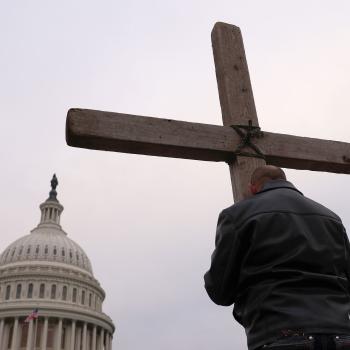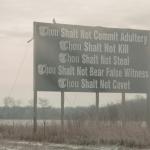Sunday’s New York Times carried a fascinating column by Russian author Sergey Kuznetsov. He grew up under communism, which he describes this way:
The world of my childhood was quiet and secure. There were no unemployed, beggars or homeless — or maybe I just never met them. There was no Coca-Cola or McDonald’s — but no one was starving, either. Of course, the TV and newspapers were filled with state propaganda, but we tuned it out, the way our children tune out annoying ads.
The world of my Soviet childhood didn’t look like a totalitarian dystopia or the threshold of a gulag. It was just boring.
Really, I hated it all. I sensed a big lie. I was sure that there was hidden terror under the surface of everyday life. There had to exist zones of violence and chaos — I knew this even before I heard about the prison camps and political repression.
And then Brezhnev died and the chaos I had always suspected rose to the surface. The Soviet Union collapsed, and the ’90s became a frightening decade of gangsters, corruption and poverty. But I was triumphant; about the chaos and the violence, I had been right all along.
I’ve always thought of communism as a womb. In theory, Communism is supposed to care for every need, make everyone equal and eliminate winners and losers. It’s essentially an attempt to turn life into a womb of safety, predictability and protection – but this protection comes at a high price. Kuznetsov puts it this way:
Bureaucracy promises imperial power and a stable life. The cost is repression and lies.
Anarchy promises freedom and opportunity. The cost is violence and fear.
As I read the column, I couldn’t help but think about the church. Christians live in the tension between these two poles. We long for the freedom and adventure that comes with following the Lion of Judah. Yet we continually try to tame this lion by creating stable, predictable church and devotional lives.
We are in the midst of an historic upheaval, in which traditional churches are dying and “church plants” are thriving. Young pastors are abandoning the safe, comforting womb of traditional churches for the “anarchy” of church planting.
Yet today’s vibrant “plants” will eventually become institutionalized. Every church starts out fishing for men, but eventually transitions into a safe aquarium for the saints. Established churches deliver imperial power and a stable, predictable menu of religious services.
But the cost is a tamed, predictable God. Here’s another description of Soviet times from Kuznetsov:
Go to school. Attend university. Get a secure job. Retire. Die. No challenges, no surprises. No risk, no violence, no sex. It was difficult to become a loser, and impossible to be a winner.
Does this describe your church? No challenges, no surprises, no risk. Difficult to become a loser, and impossible to be a winner? (Hopefully there’s no violence or sex on Sunday mornings…)
Traditional churches are hemorrhaging members (and men in particular) because so many have become wombs. The entire mission of these congregations is comfort: comforting longtime members, and comforting the downtrodden. They’ve rejected or reinterpreted Biblical texts that make certain minority groups uncomfortable. They’ve put aside evangelism because it discomforts people.
They’ve created a Soviet-style religious delivery system in which every need is minimally met. Everything proceeds according to a safe, predictable, stage-managed routine. It looks so peaceful but tension boils just below the surface. In a word, it’s boring.
Young men are looking for that “hidden terror” that they know exists just below the surface. They need to know that church is about more than just potluck dinners and keeping children safe from sin.
So what’s the key? Not to state the obvious, but a church that’s going to engage young men must have God. But not the gentle God of our imaginations – churches need Jesus, Mean and Wild. Christ the tiger.
How do we get this disrputive Jesus back into our churches?
Adding a bit of creativity and unpredictability to your weekly worship is a good starting place. Pastors, do something unexpected every week. Roll in on a bicycle. Lower one of your elders from the ceiling. Set something on fire (besides a candle). These are not mere parlor tricks – when you do something creative or unpredictable you model the creativity and unpredictability of our God.
My friends Thom and Joani Schultz suggest four acts of love that make way for the tiger: radical hospitality, fearless conversation, genuine humility and divine anticipation. They’ve launched a ministry called Lifetree Cafe that is helping established churches love their communities and shake up their routines.
When a church offers these four things some chaos will result. What else can you expect when a tiger roams free in your midst?
Church leaders have to learn to recognize this creative chaos and welcome it. Otherwise, young men will continue to leave.
















